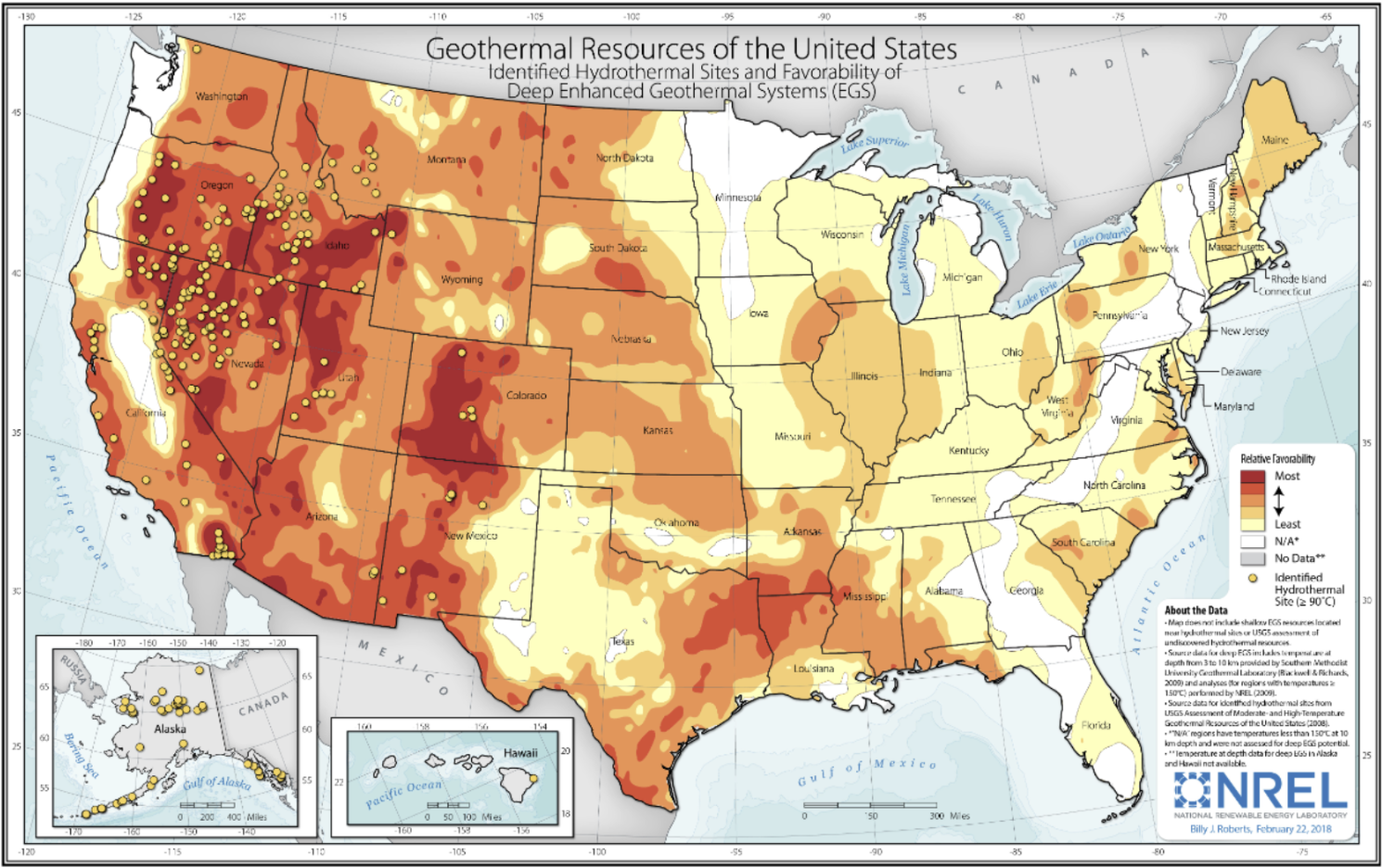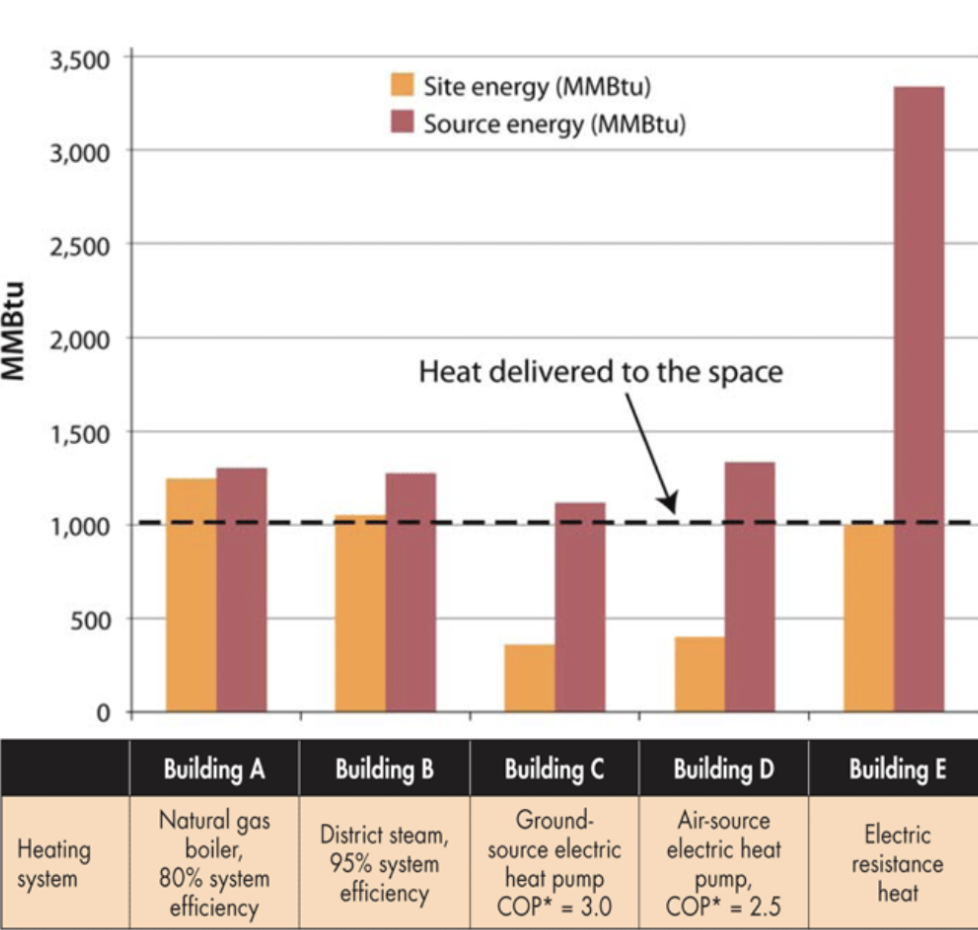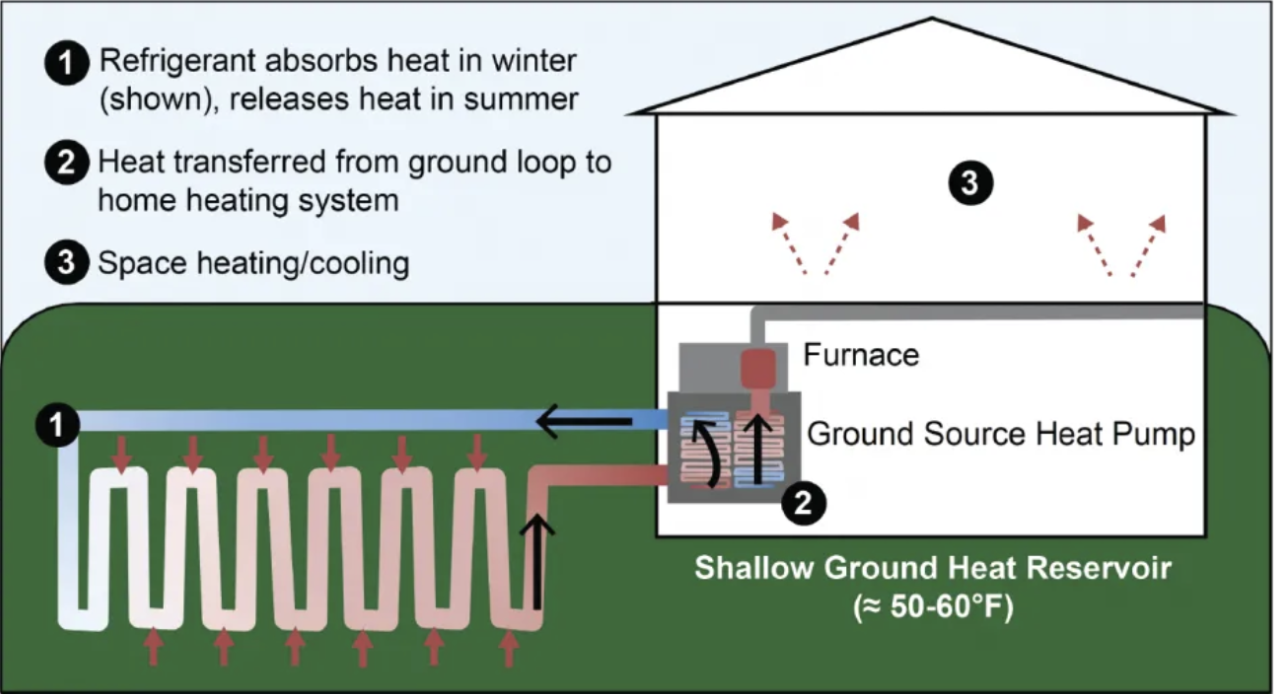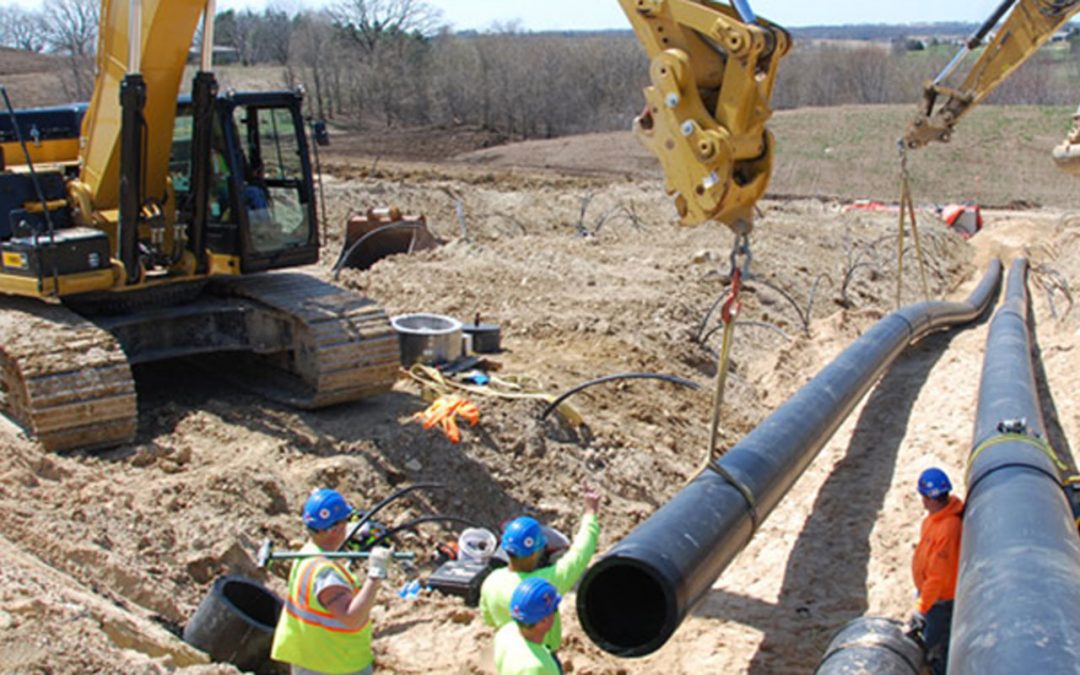Photo Credit: James Tinjum – Associate Professor & Director of the Geological Engineering Program at UW-Madison
Energy is the driving force of our world, powering everything from our cars to our phones and the way we generate our energy is closely tied to our health and economic prosperity. Current environmental and economic pressures are moving us toward cleaner and cheaper energy systems. As this transition gains speed it allows us to uplift communities that have been historically marginalized by disinvestment and pollution. However, this transition is complex and requires education so that all stakeholders understand the risks and opportunities ahead. To achieve success, we must understand the technologies and the tools required to grow the economy, increase energy independence, and improve our health and well-being. The purpose of this writing is to discuss geothermal energy and explore how this technology fits in the context of Wisconsin.
I have been fortunate to work in the clean energy industry for the past decade. During this time, I have learned that “geothermal energy” means different things to different people. While it is acceptable for the term “geothermal” to describe both renewable energy systems and energy efficiency measures, we must understand the differences between the two. Just like the word “cassette” can refer to a collection of sprockets in a bicycle or an analog audio recording device, the term “geothermal” can describe either a way to generate electricity from high-temperature water reservoirs (renewable energy) or a strategy to maximize the efficiency of an electric appliance (energy efficiency).
Renewable energy sources such as solar panels or wind turbines do not require any fuel input to generate electricity, as they convert light or the kinetic energy of air into electricity. Meanwhile, energy efficiency measures aim to increase the amount of work that can be done per unit of energy, regardless of the energy source. In the following paragraphs, I will explain the differences between geothermal renewable energy, which results in electricity generation, and geothermal energy efficiency, which is implemented with geothermal heat pumps. Additionally, I will provide examples of how geothermal energy can help Wisconsin residents and businesses save both energy and money.
Geothermal Energy – The Big “G”
Geothermal energy is a renewable source of heat that comes from the Earth’s interior. Geothermal heat is derived from naturally formed or artificially created reservoirs of hot water found at varying depths and temperatures below the Earth’s surface. Natural hot springs and the famous Old Faithful geyser in Yellowstone National Park are good examples of natural geothermal energy. In contrast, artificial geothermal (also known as enhanced or engineered geothermal energy) is captured by pumping cold water into hot rock deep under the Earth’s surface. This process transfers heat from the hot rock to the water and produces steam. Geothermal heat, both natural and enhanced, can be utilized as an energy source for district heating or converted into electricity using turbines.
In Iceland, about 90% of homes are heated using hot water or steam from natural geothermal fields located near one of the country’s 600 hot spring areas. Geothermal also provides 30% of Iceland’s electricity. Geothermal electricity is produced by spinning a turbine coupled with a generator. Once the turbine starts rotating, the generator converts the kinetic energy of the rotor into electrical energy, just like in a coal or gas plant. The main difference is that coal or gas plants require a fossil fuel input, while geothermal plants don’t need any fuel, just the heat from the Earth. In other words, all the mechanical energy required to operate the geothermal plant is derived from a geothermal reservoir located near or below the plant, which makes geothermal electricity clean, renewable, cost-effective, and available 24/7.

The United States is also a leader in installed geothermal capacity. According to the National Renewable Energy Laboratory (NREL), geothermal heat contributed 210 trillion BTU (about 0.2% of the total energy consumed) in the U.S. in 2022. Geothermal electricity is currently generated in several states including California, New Mexico, Utah, Nevada, Idaho, Oregon, Alaska, and Hawaii. The U.S. Department of Energy (DOE) has identified significant geothermal resources, most of which are located west of the Mississippi River, and estimates that geothermal can contribute up to 8% of the country’s energy needs by 2050. At the time of this writing, Wisconsin has no known hydrothermal resources suitable for renewable geothermal energy generation.
Geothermal Heating and Cooling
– The little “g”
Heating and cooling are essential aspects of building operation, especially in regions with wide temperature variations like Wisconsin. According to the Energy Information Administration (EIA), space heating and cooling account for over 40% of energy usage in commercial buildings and nearly half of the average home’s energy usage. Many homes and commercial buildings in Wisconsin use natural gas furnaces for heating and mechanical air conditioners for cooling. Heat pumps are quickly becoming a cost-effective alternative to the furnace and air conditioner combo, as they can provide both heating and cooling using a single appliance and rely on electricity rather than gas or other combustible fuels. Think of a heat pump as a device that moves heat from a heat source to a heat sink. A refrigerator provides a good example of how a heat pump works. The heat pump in a refrigerator uses electricity to transfer heat from inside the fridge (heat source) to the air outside the fridge (heat sink), thus reducing the temperature inside the fridge and keeping the food fresh.
Heat pumps can output several units of energy for every unit of energy input. For instance, a heat pump that delivers three (3) units of heat (measured in British Thermal Units or Btu) and consumes one (1) Btu has a Coefficient of Performance (COP) of 3. This means that the heat pump has an efficiency of 300%. To compare, the most efficient gas furnaces on the market are only 98% efficient. Therefore, the heat pump in this example is three (3) times more efficient than a furnace. Some people argue that expressing efficiency in values above 100% is wrong, which is why heat pumps are usually rated in terms of their COP instead of their efficiency.

Heat pumps can move energy from air to air (air-source heat pumps) or from water to air (water-source heat pumps). Both air-source and water-source heat pumps can work in reverse. For example, a water-to-air heat pump can also move heat from air to water. It is also important to note that all heap pumps function in the same manner. Whether it is an air-source heat pump or a water-sourced heat pump, the same thermodynamic principles apply. The function of the heat pump is to move – rather than generate – heat.
Geothermal Heat Pumps

Geothermal heat pumps are heating and cooling appliances. Heat pumps move heat from the geothermal field into a building during the heating season and from the building into the geothermal field during the cooling season. The geothermal field is a heat exchanger, typically composed of a set of pipes buried underground or submerged in a body of water, which acts as a heat source in the winter and as a heat sink in the summer.
Geothermal Heat pumps have a significant advantage over air-source Heat pumps in areas with high-temperature variations, such as Wisconsin, because the ground temperature in these regions remains relatively constant year-round. For example, Wisconsin’s air temperature can drop below zero in the winter and reach over 90 °F in the summer. Yet, the temperature of the ground eight feet below the surface remains relatively stable at about 45-58 °F throughout the year. Contrary to popular belief, the ground around the geothermal field does not store solar energy. The earth’s temperature at that depth is constant throughout the year. Therefore, In the summer, the ground is generally cooler than the air, while in winter, the ground is typically warmer. Geothermal Heat pumps take advantage of this constant temperature to reduce the amount of energy required for heating and cooling, decreasing the overall energy consumption of a building.
Geothermal heat pumps are becoming increasingly popular in Wisconsin. At the Epic Campus in Verona, thousands of miles of geothermal pipes that stretch 500 feet underground are connected to heat pumps that heat and cool the buildings. The Discovery World Museum building in Milwaukee is another great example of a geothermal system that uses heat pumps and water from Lake Michigan as the heat source. Although the systems at the Epic Campus and the Discovery World Museum use different heat sources, the heat pumps in both of these facilities work in the exact same way. They use the relatively constant temperature of the earth or the lake to heat and cool buildings, which saves energy and money compared to traditional furnaces and mechanical air conditioners.
Conclusion
Geothermal electricity is a reliable, cost-effective, and renewable source of energy that has the potential to make a significant contribution to the energy supply in the United States. The geothermal resources in the U.S. are mainly concentrated west of the Mississippi River, which means that Wisconsin has limited opportunities to access geothermal reservoirs that are hot enough to generate renewable electricity. However, the varying temperatures between the ground, water, and air in the state provide an excellent opportunity to leverage geothermal heat pumps for heating and cooling purposes. Furthermore, geothermal heating and cooling systems work well in tandem with rooftop solar because the heat pump regulates the building’s temperature using electricity provided by the on-site solar panels, lowering energy costs, and transmission losses, and reducing greenhouse gas emissions.
Heat pumps are currently the most energy-efficient heating and cooling systems available in Wisconsin. The state has a growing number of geothermal facilities, including the 1,100-acre headquarters of medical software giant Epic Systems. The Inflation Reduction Act (IRA) provides substantial incentives for geothermal heat pumps and solar, and Wisconsin’s Focus on Energy® Program also incentivizes equipment that reduces energy consumption in new and existing buildings. Taking advantage of these incentives can help reduce the state’s reliance on imported fossil fuels and reduce emissions from power generation.

